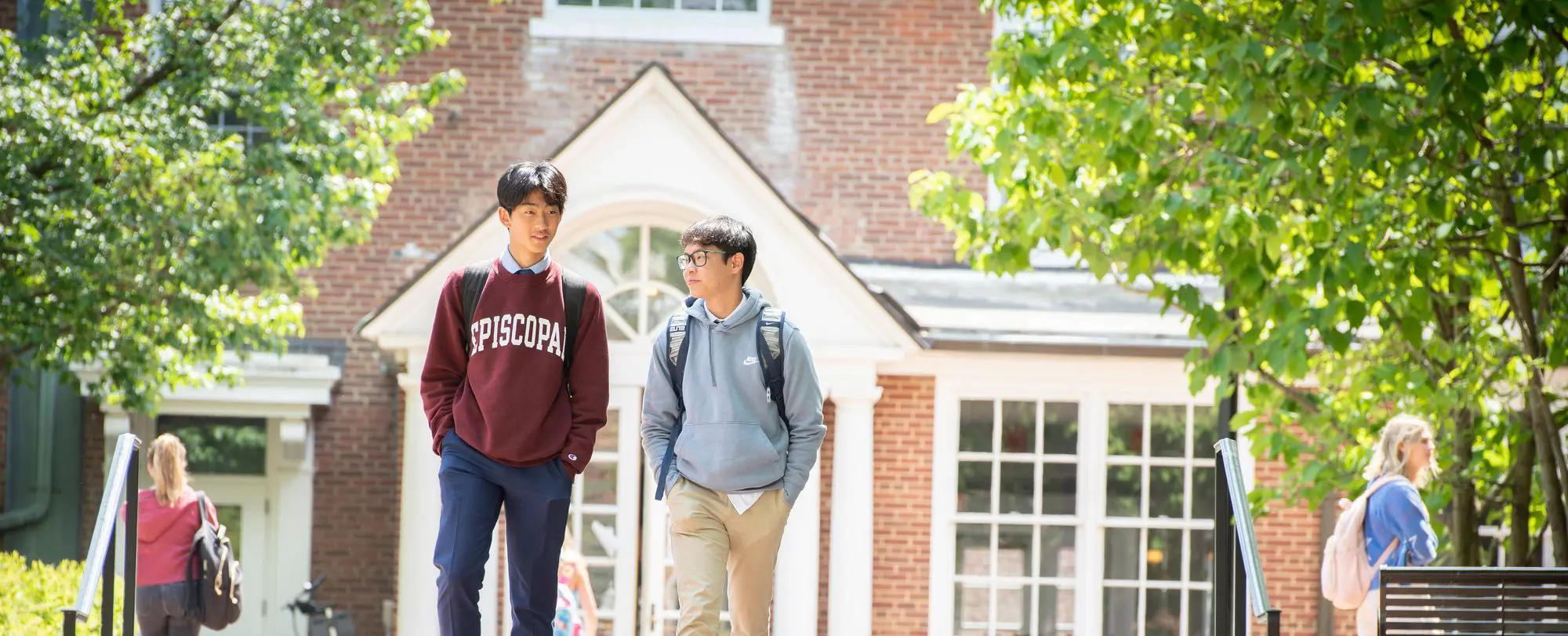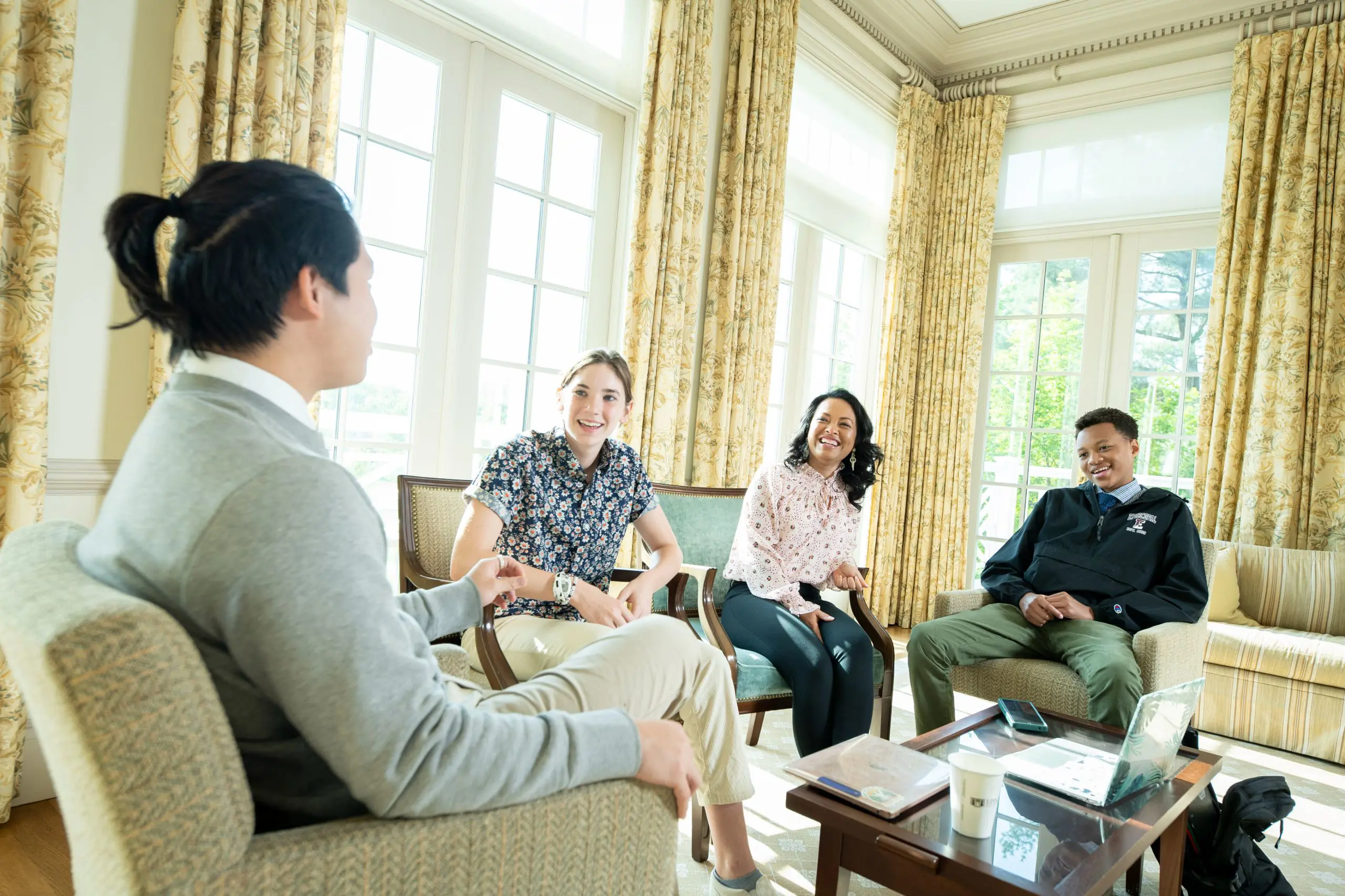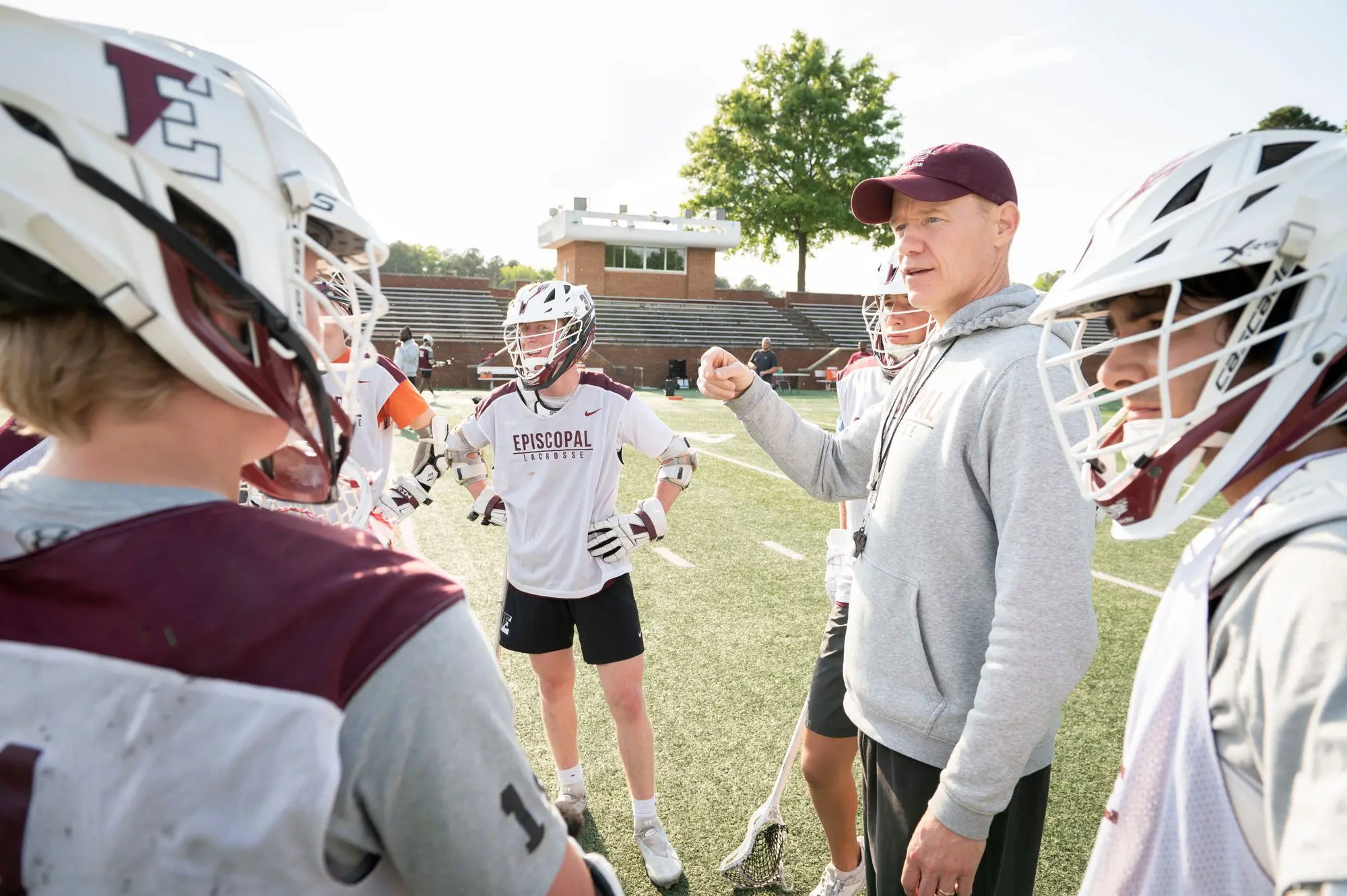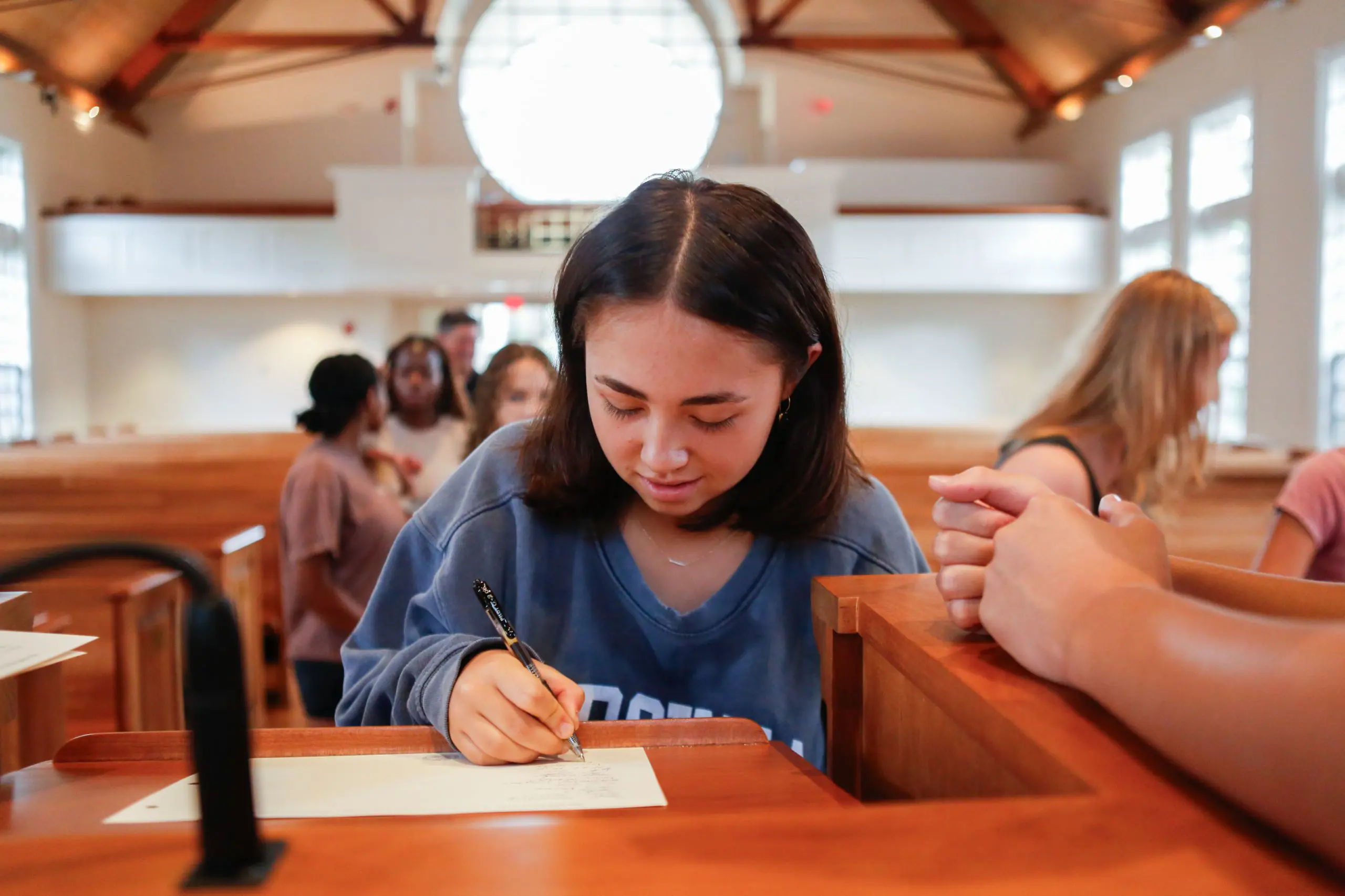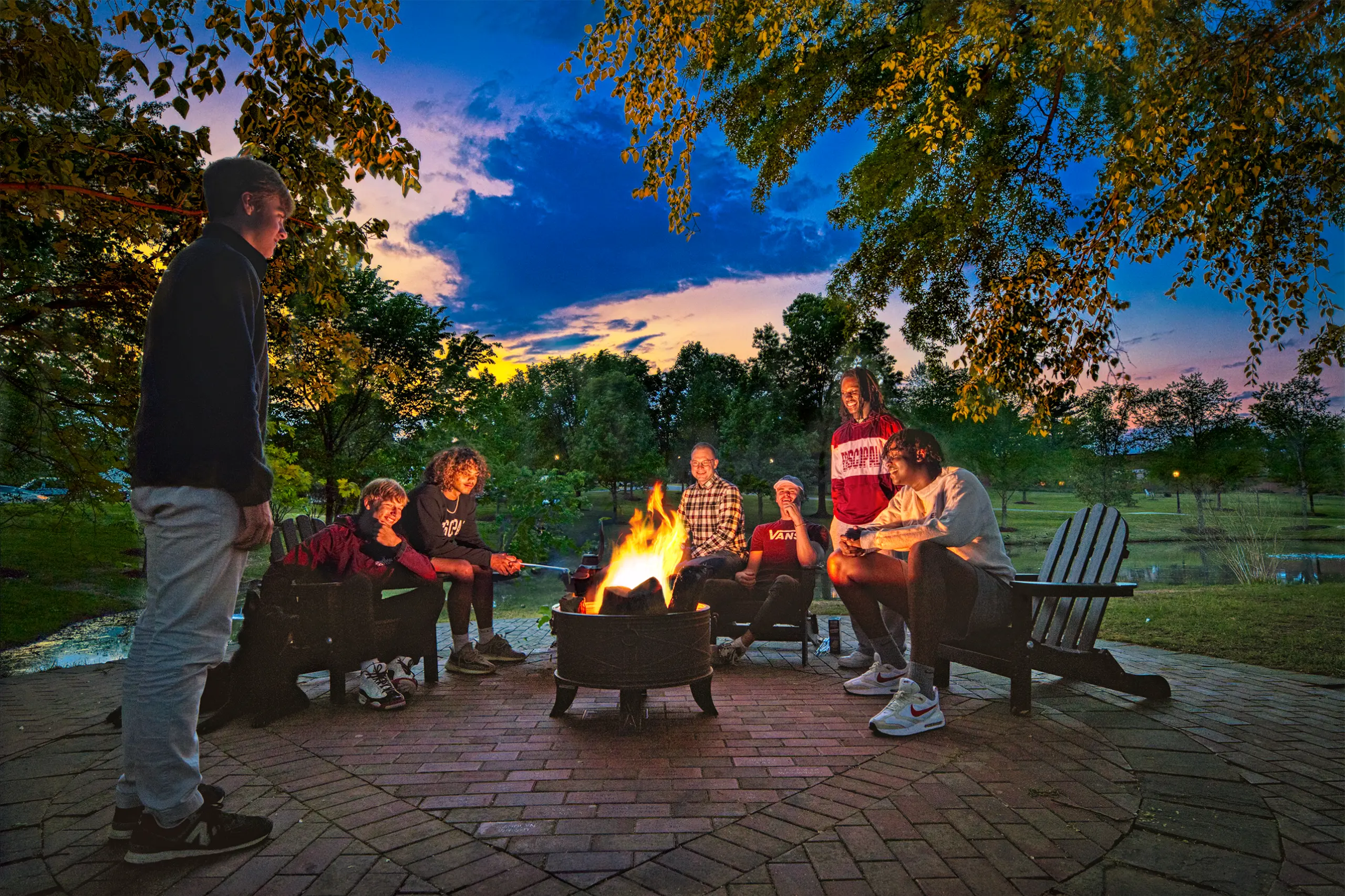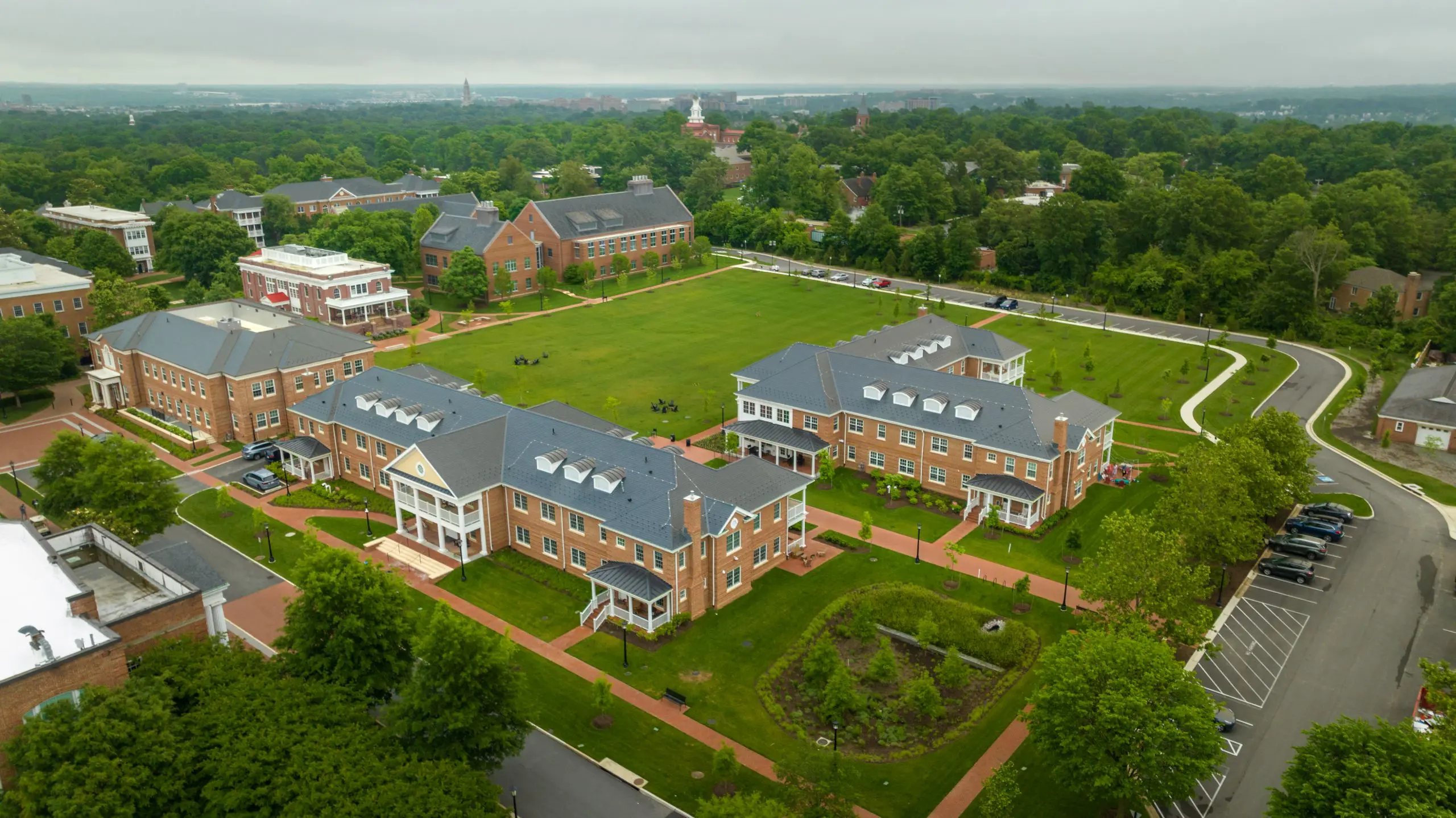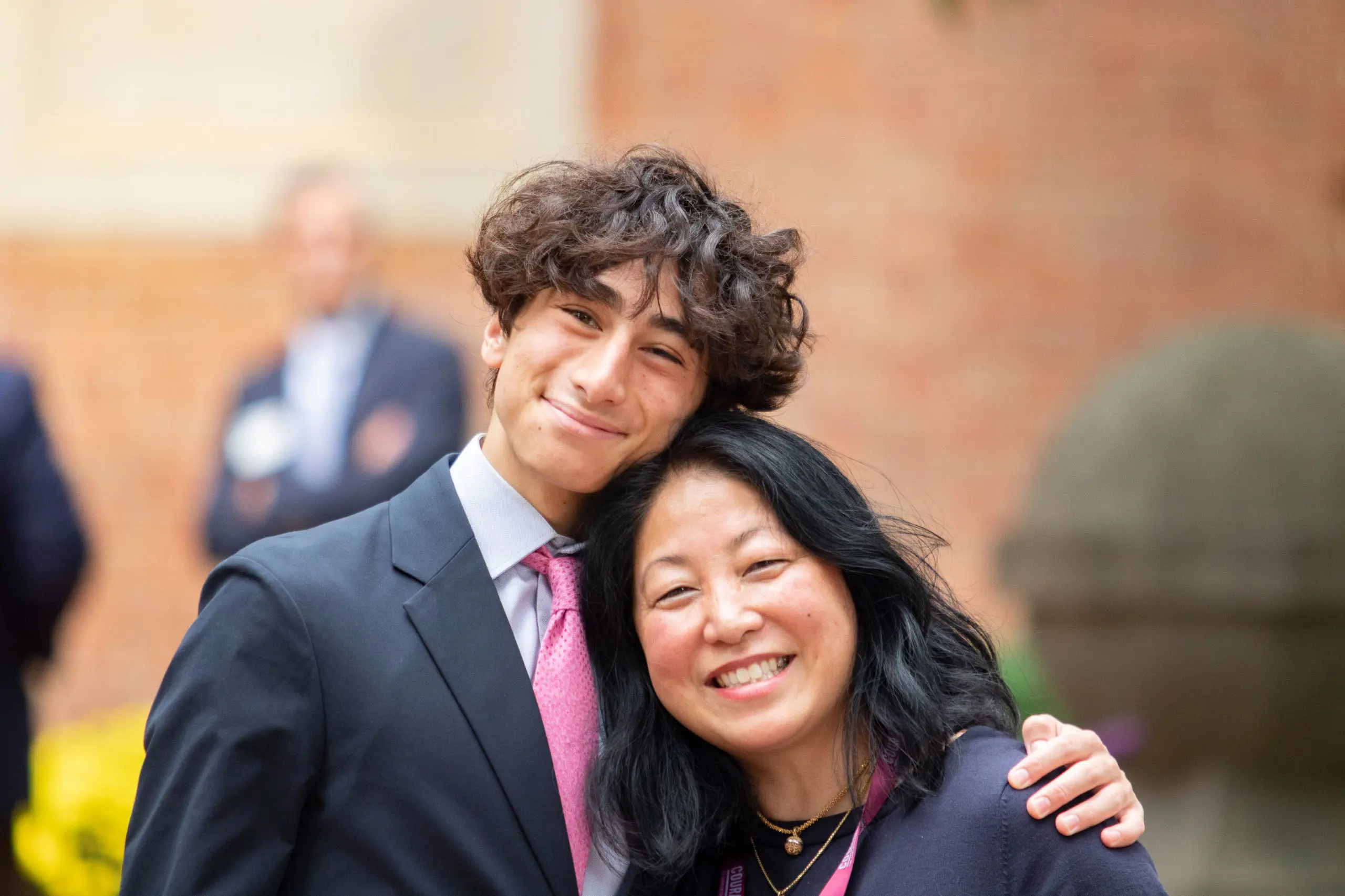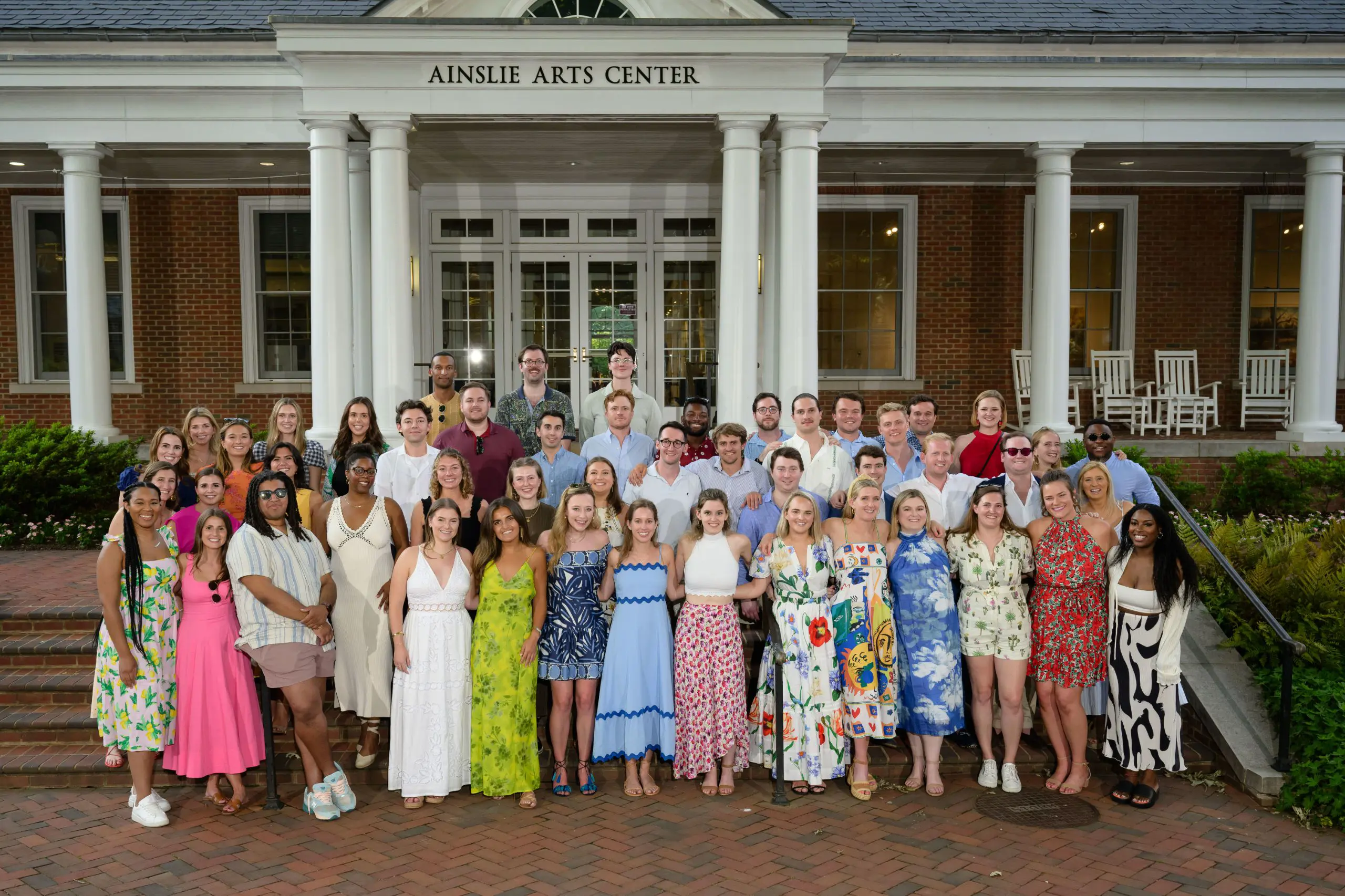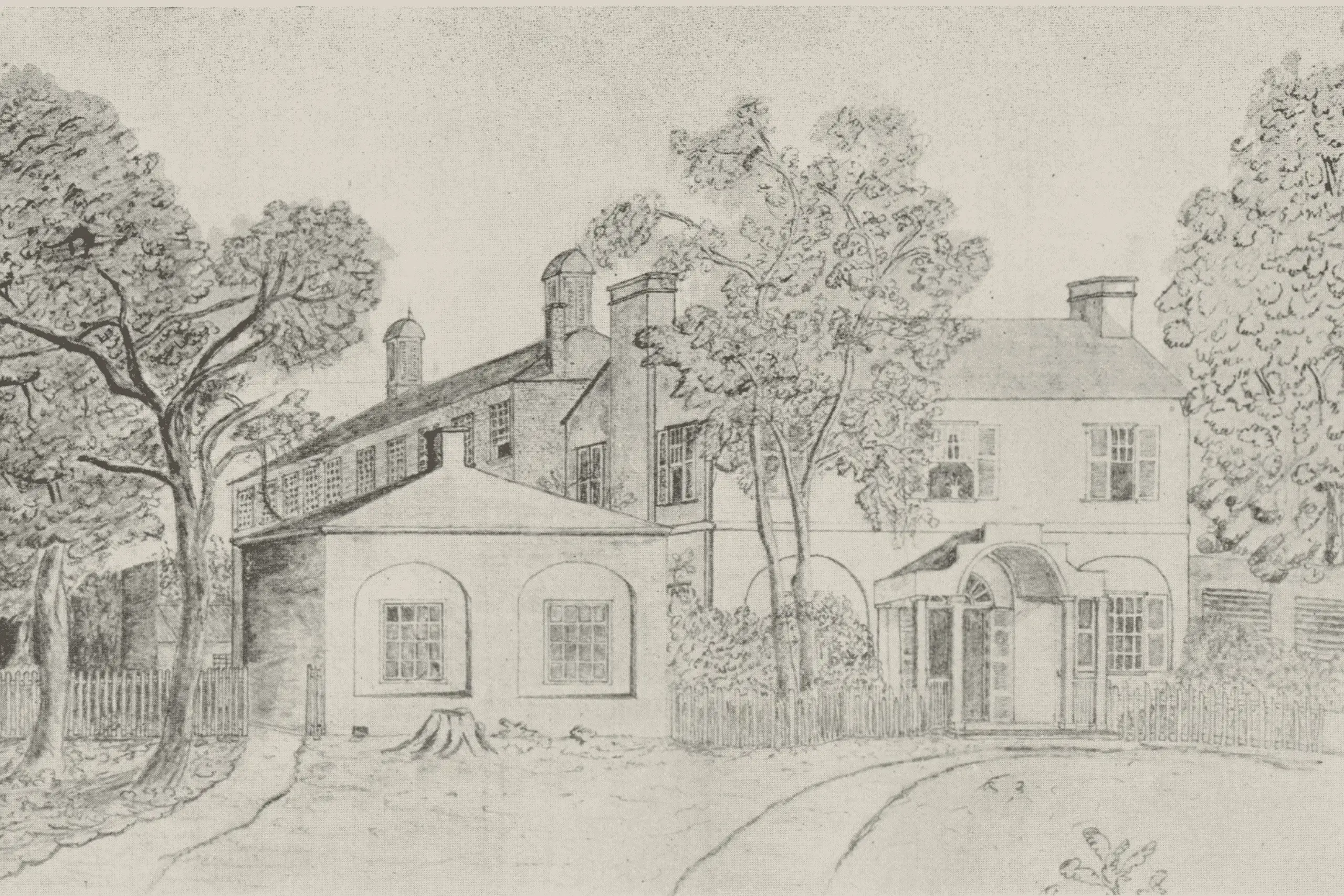In This Section
In 1839, Episcopal High School opened its gates with 35 students and William Nelson Pendleton as its Principal. In July 2016, Charles M. Stillwell became the 12th Head of School in Episcopals then 177-year history. Though the title has changed over the years, from Principal to Headmaster to Head of School, the impressive tenure and accomplishments of these 12 leaders propels The High School as it approaches its third century.
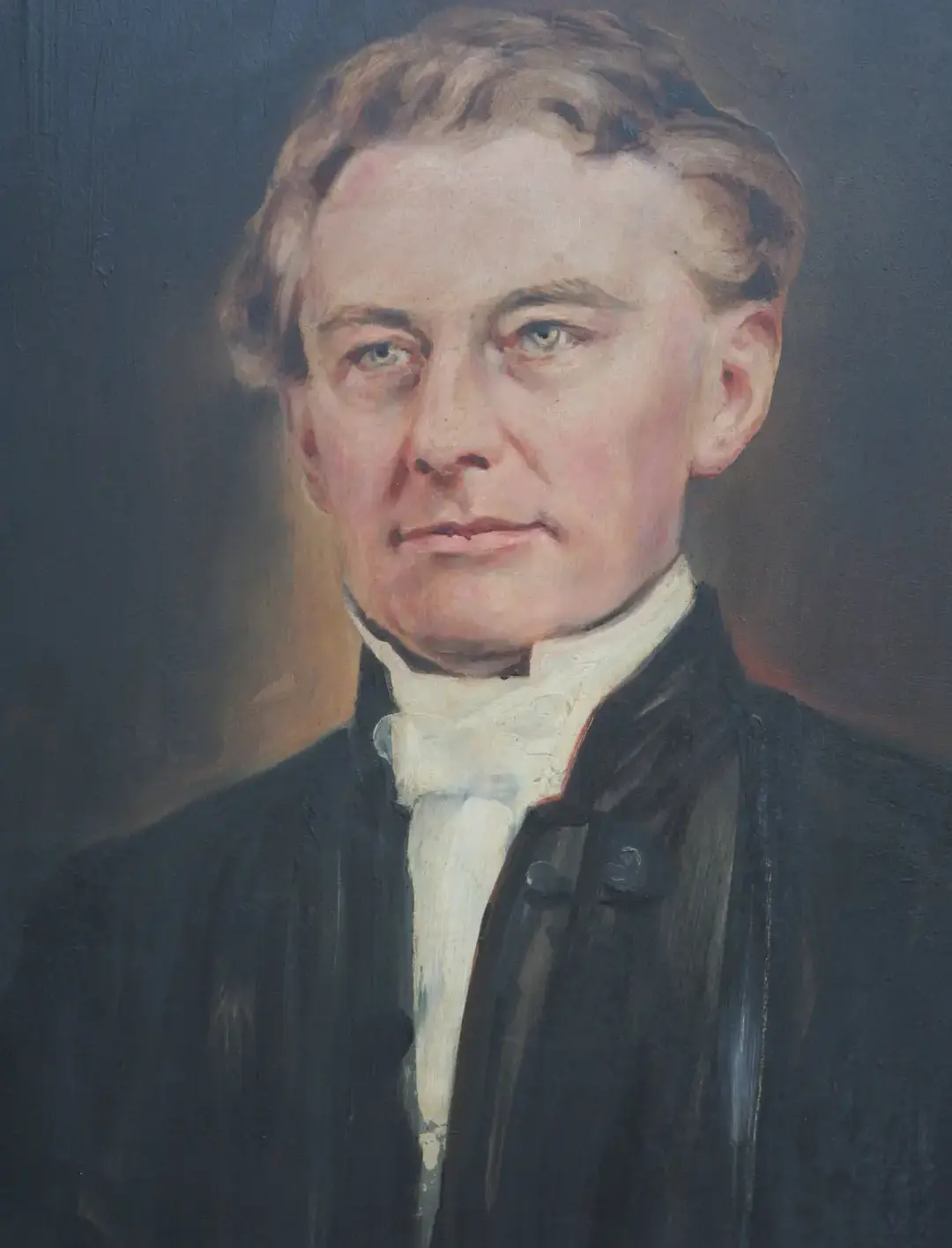
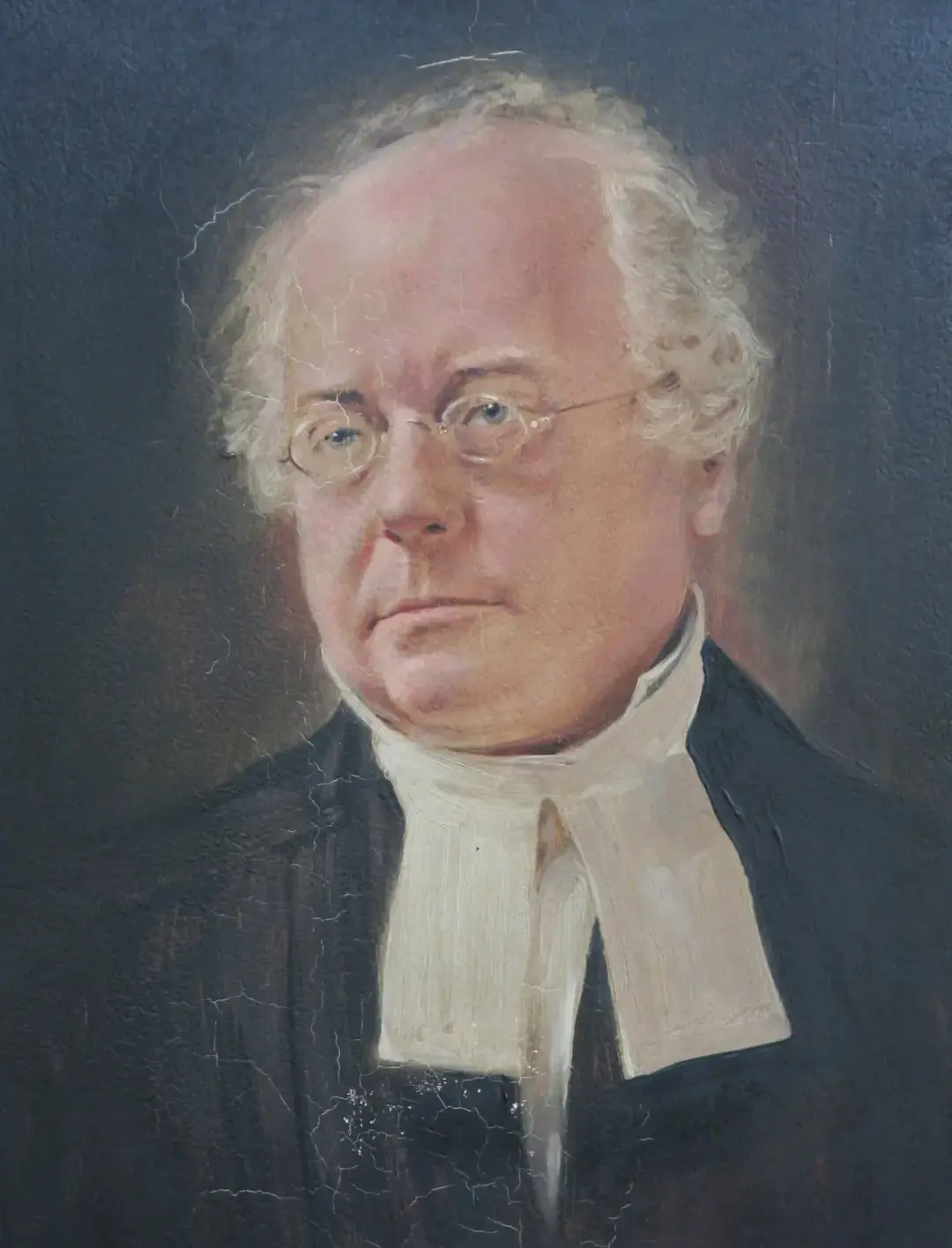
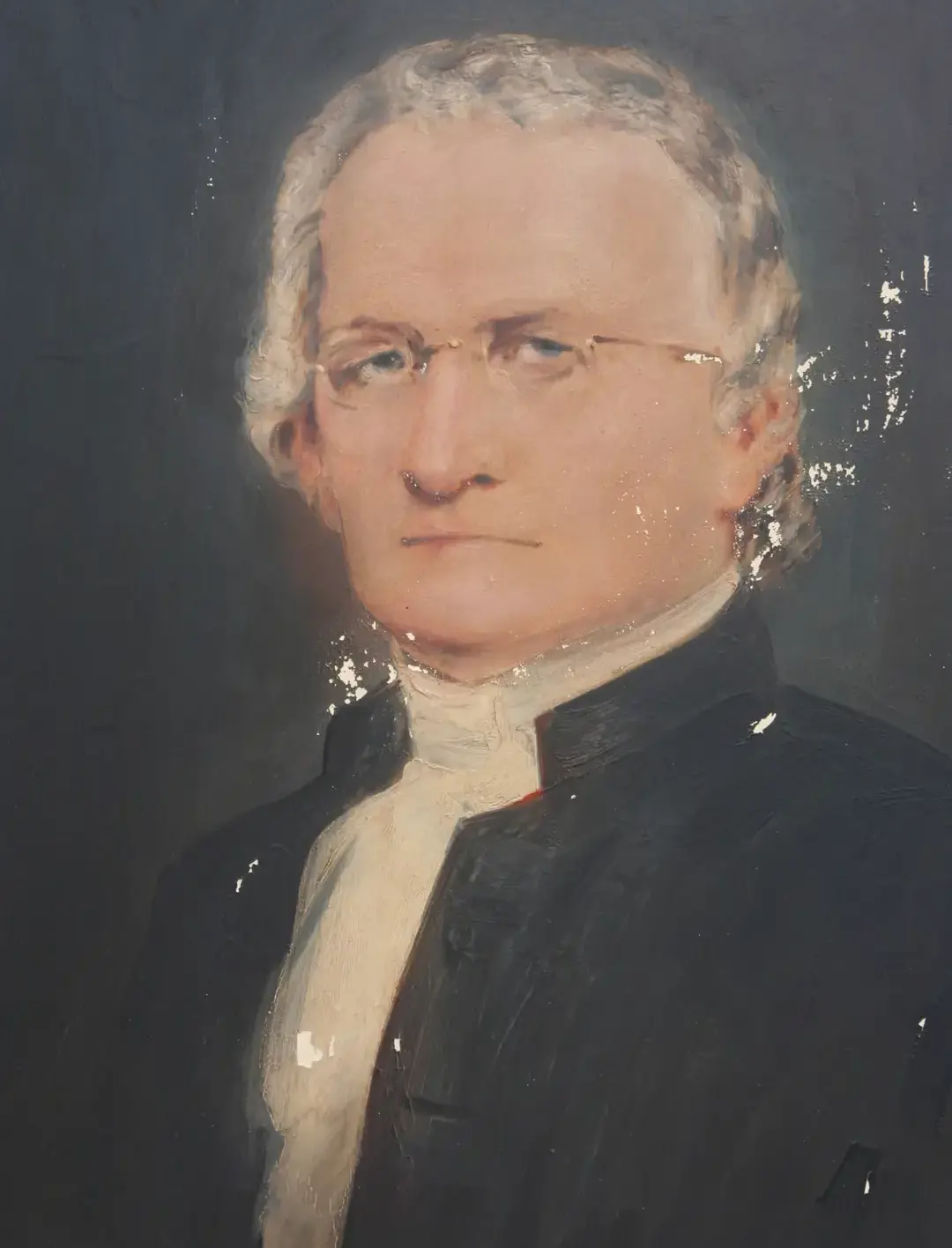
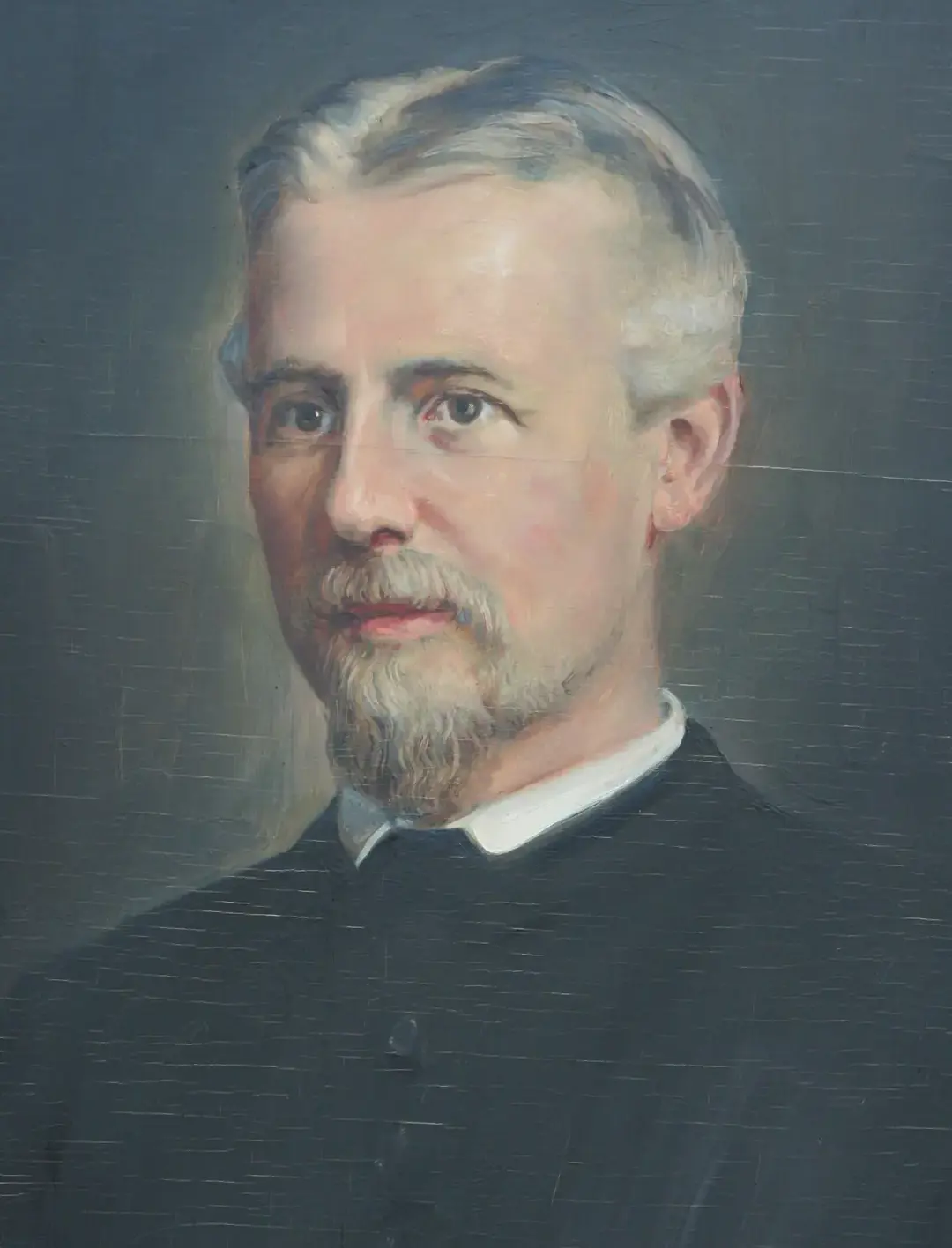
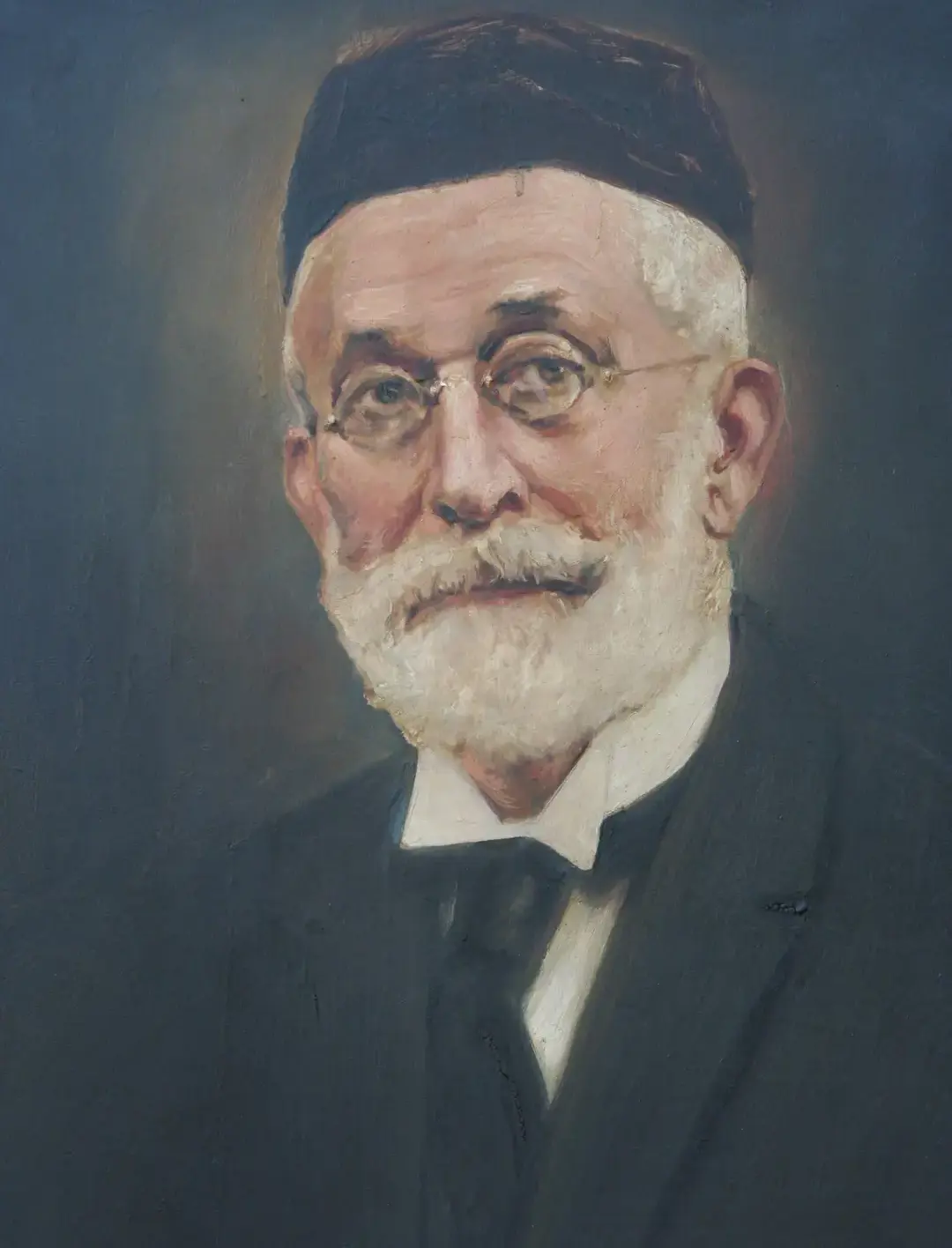
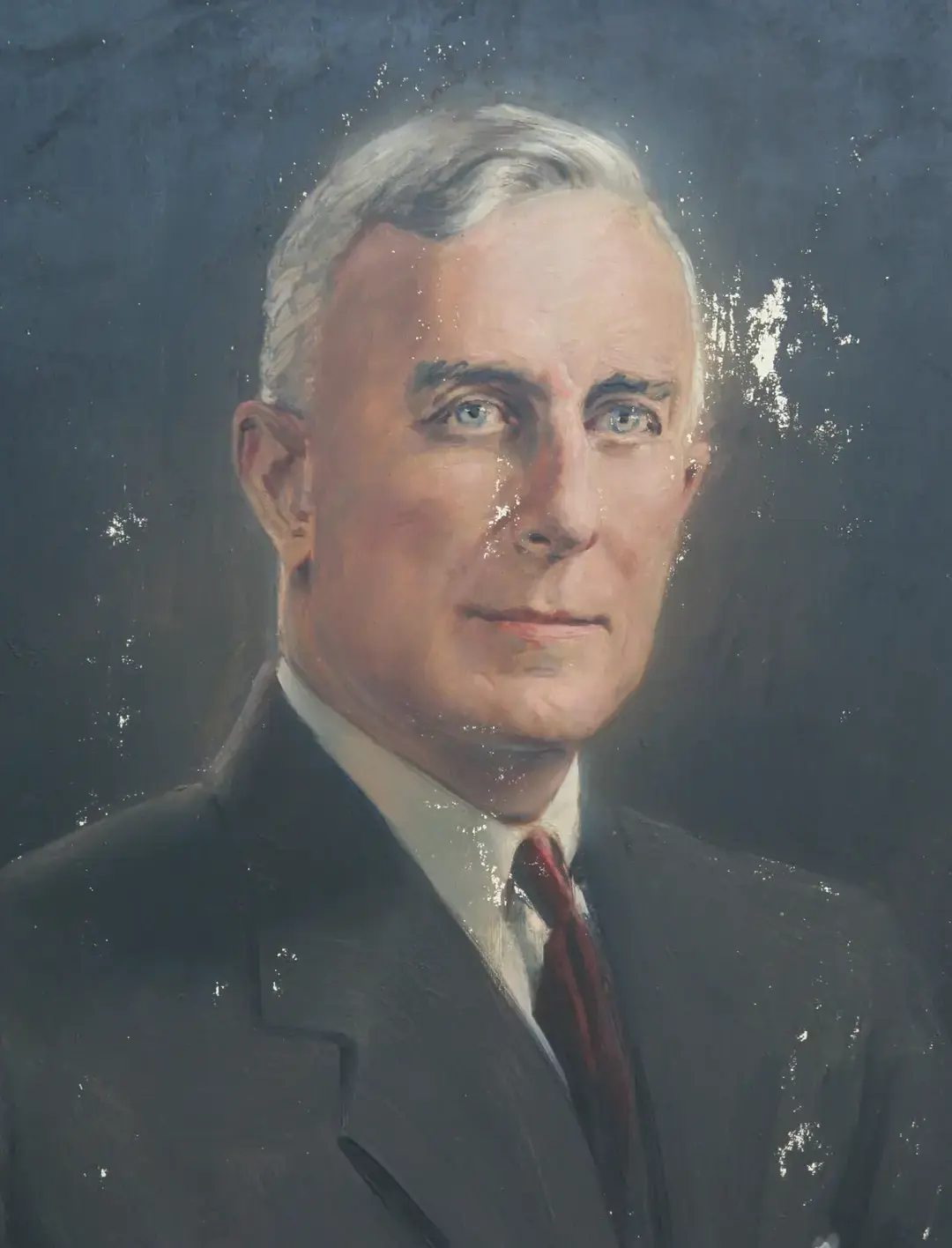
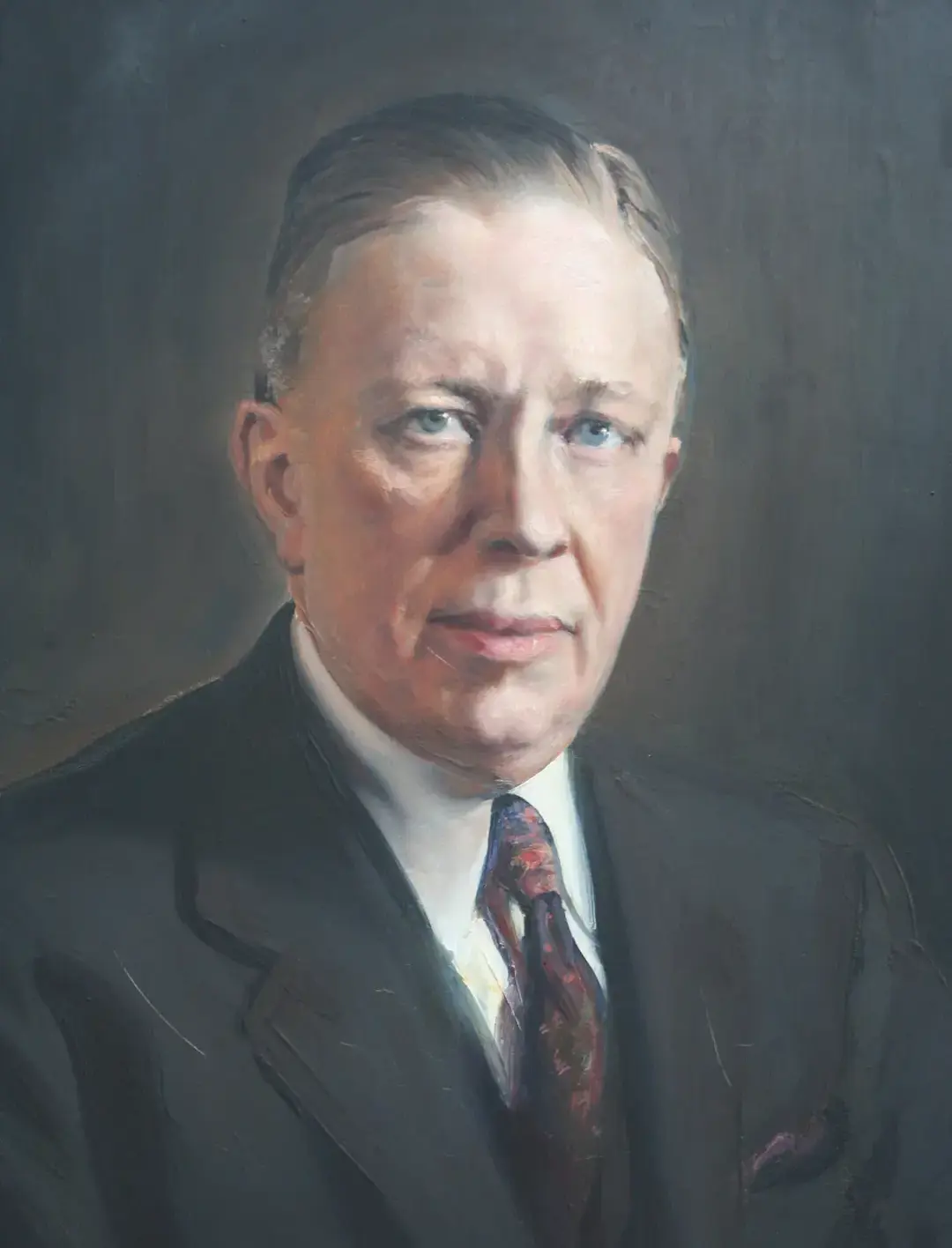
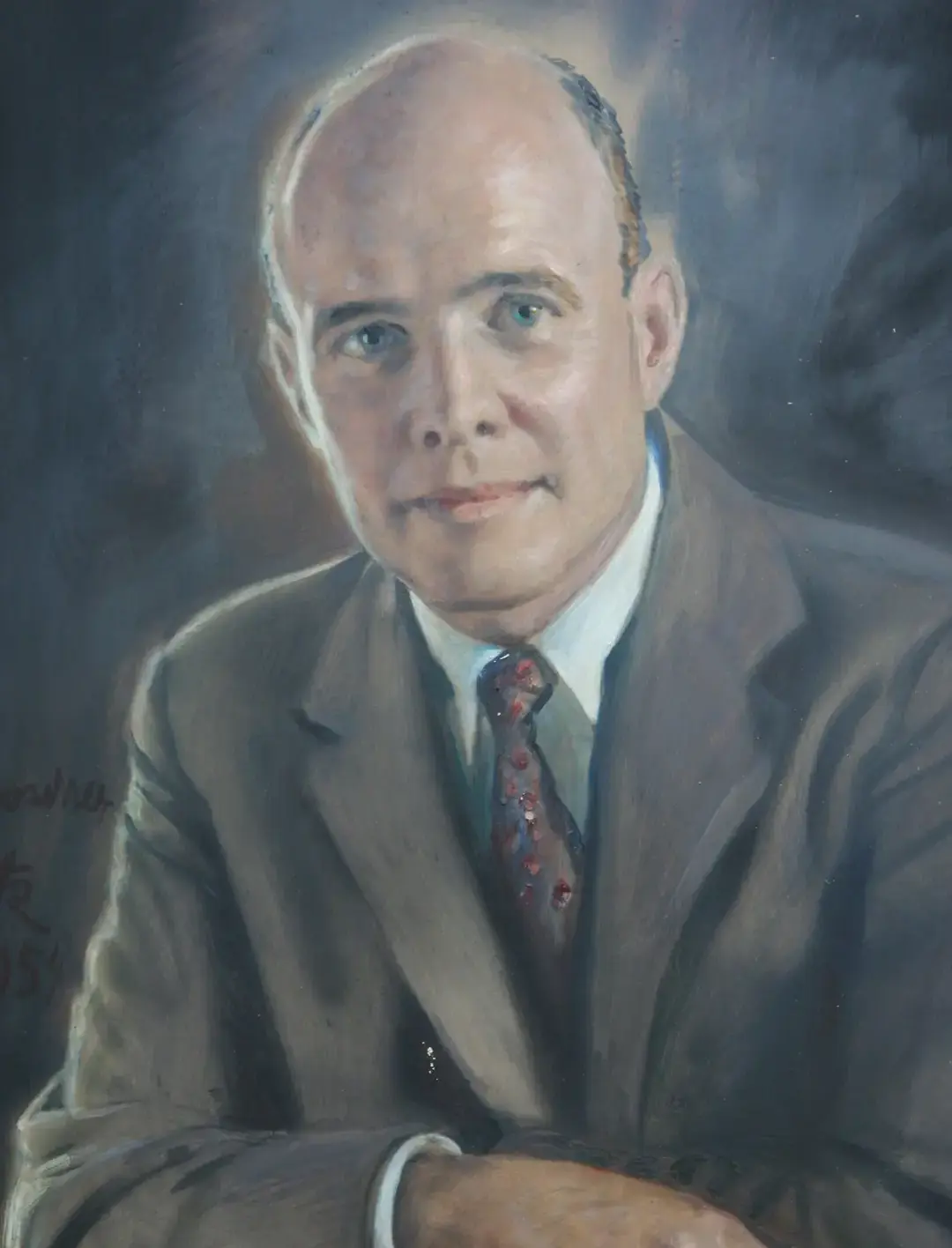
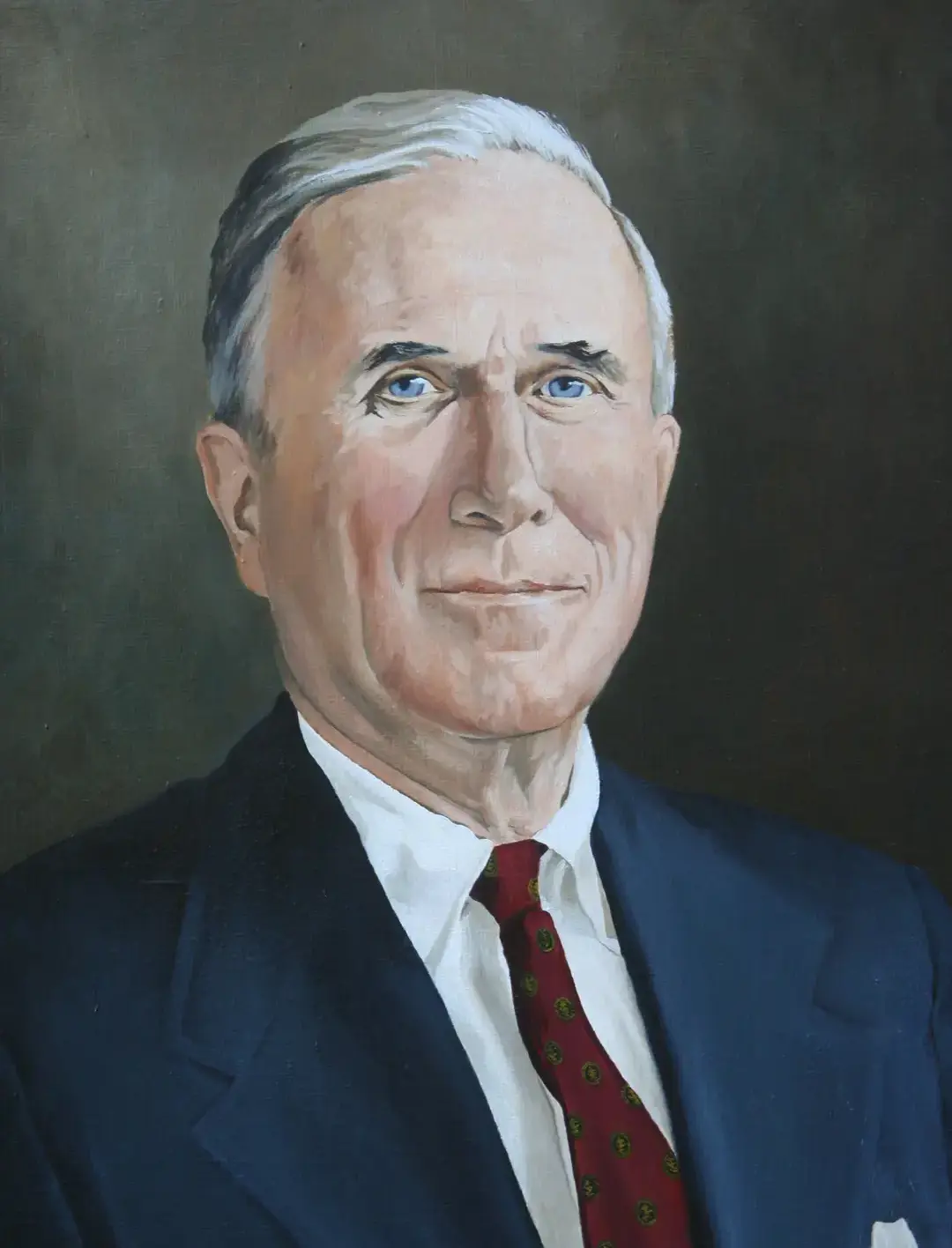
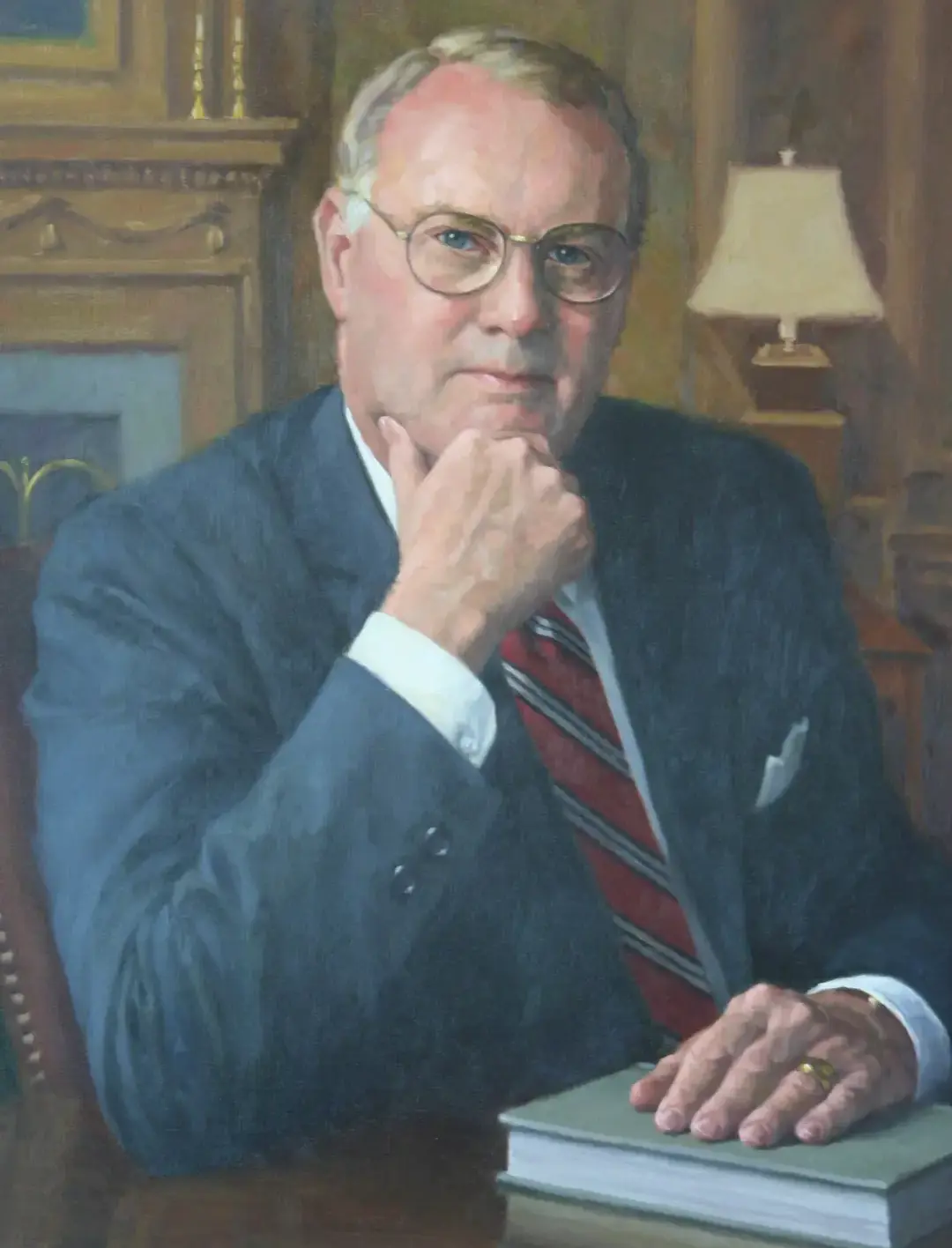
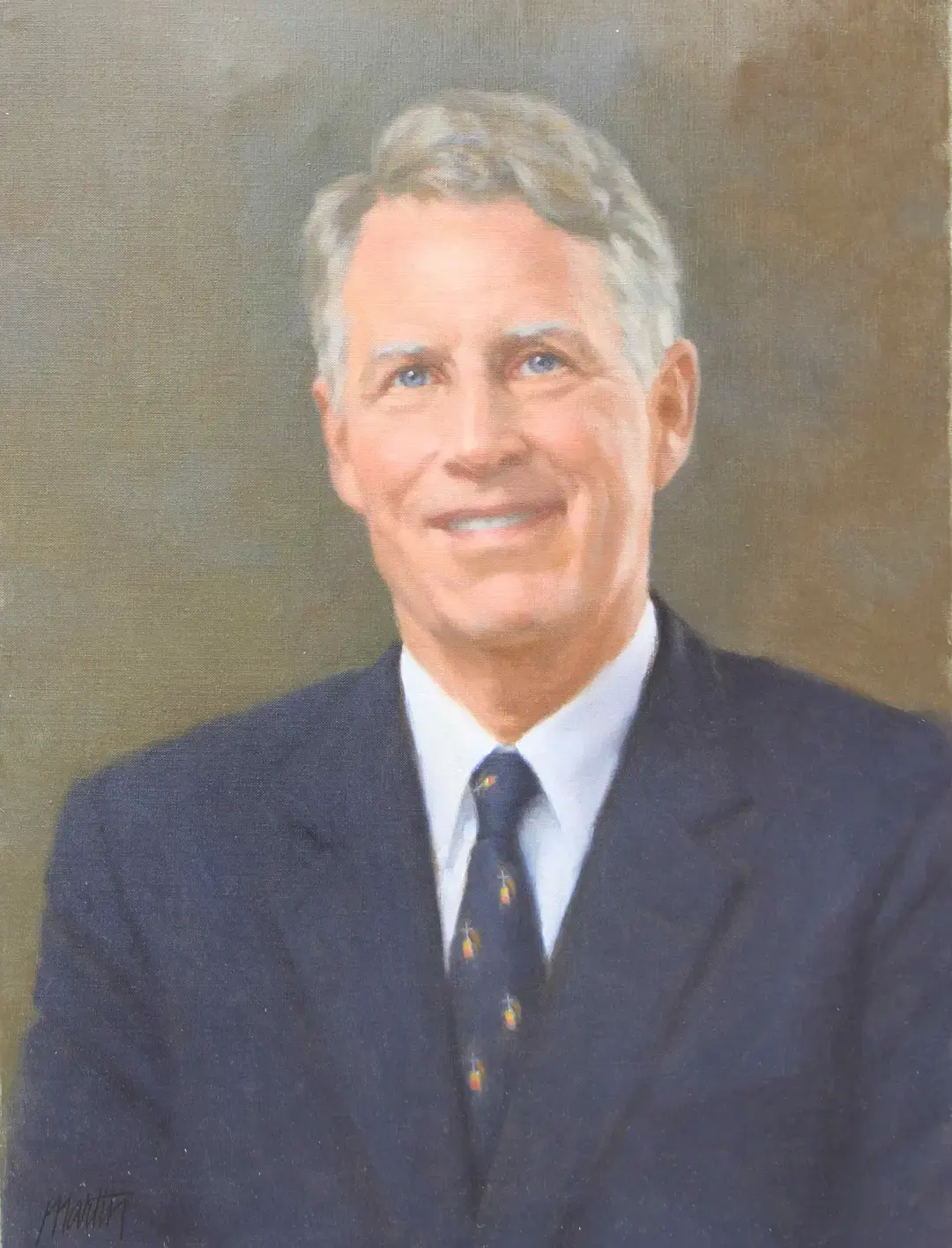

1839-44: William Nelson Pendleton
In 1839, Episcopal High School opened its gates with 35 students and William Nelson Pendleton as its Principal. Mr. Pendleton’s task as the School’s leader was complicated by the financial challenges of managing a new school, but by the following year, three new teachers joined the faculty and enrollment soared to 101. Despite the strain of leading the fledgling School, Mr. Pendleton led with spirited fun, gentleness, and most importantly, a sense of humor. For instance, the consequence of an unauthorized fishing expedition was a long day of boys casting lines from an upper floor window.
Mr. Pendleton described the mission of the School as “[providing] for boys during the critical period of middle youth and incipient manhood the safest and best superintendence, the soundest and most healthful moral influences and the most faithful Christian guidance, associated with the most useful and extensive course of learning practicable."
Mr. Pendleton left Episcopal in 1844, having set the School on a firm academic foundation with a rigorous curriculum, including mental and moral philosophy, Latin, Greek, physics, geometry, algebra, arithmetic, engineering, and geography.
“Having in large measure that enthusiasm for imparting knowledge which is the most essential attribute for a successful teacher, his first effort was to gain the attention of and excite the subject before him.” Susan Pendleton
1845-52: Edwin Augustus Dalrymple
Episcopal High School emerged after being closed for the 1844-45 school year under the leadership of Edwin Augustus Dalrymple, a strict disciplinarian who held the students to exacting standards. Yet despite his stern measures, Old Dal, as he was nicknamed, earned extraordinary loyalty. During his tenure, Mr. Dalrymple grew the student body from nine to 85 students and made many repairs to the School’s buildings. “[He] put his whole strength into the business and got results,” recounted Arthur B. Kinsolving, Class of 1914.
Mr. Dalrymple’s specialty was Latin, and his instruction was inspired, focusing more on literature than syntax. “The Rector’s talks on the life of the ancients were full of inspiration; he made the classic ages live before his pupils and was a great interpreter of their philosophy and example,” wrote Kinsolving.
Under Mr. Dalrymple’s leadership as Principal, the School’s reputation thrived, and EHS was regularly visited by celebrities of the day. Edgar Allan Poe visited the School during its 1847 final exercises and, to the delight of all present, recited “The Raven” for the gathering. Having established a more secure financial footing for EHS, Mr. Dalrymple left for Baltimore in 1852, but his deep interest in the School continued for years to come.
“Education of the mind, however, and the formation of business habits, are by no means the sole or most important aim of the School. Whilst these receive constant and proper attention, it is at all times, borne in mind that the morals, the heart, the affections, and the manners of the students are not, by any means, to be neglected.” Edwin Dalrymple, 1849 Episcopal High School Catalogue
1852-61: John Peyton McGuire
Unlike his predecessors, Principal McGuire, known as Old Mac, found the School pleasantly solvent and raised the School’s tuition from $200 to $250 to ensure continued financial stability. Mr. McGuire had served on the Board of Trustees since the School’s founding.
Despite his role as disciplinarian, Mr. McGuire was approachable and open to students’ ideas and input. In response to student petitions, he would grant unscheduled holidays for skating in the winter or fishing and swimming in the warmer months. The welcome news would be announced by the Principal’s appearance at the chapel door following the 9:00 a.m. bell. His face would light up with a smile and with the students’ petition in hand, he would advise, “When you play, play as hard as you can, and when you study, study as hard as you can.”
When life at the School was especially difficult, as it was during the historically cold and snowy winter of 1856-57, Mr. McGuire would welcome his students into his study to keep warm and would entertain them by reading the newspaper aloud.
Mr. McGuire oversaw the closure of the School due to the Civil War.
“To the average boy, the principal of a school embodies sternness and repression, and is the task master who exacts the performance of burdensome duties, a man who has no sympathy with the difficulties and temptations of boys. After I knew Mr. McGuire, I came to understand that he was a man who had once been a boy himself and sympathized with the trials and tribulations of boys.” Joseph Bryan, Class of 1861
1866-70: William Fowler Gardner, Class of 1857
The Civil War took a significant toll on the School. EHS was occupied by Union troops; its buildings served as a Union hospital, and the chapel was used as a morgue. When the war ended, the facilities were in shambles and funds were in desperately short supply.
An Old Boy, William Fowler Gardner, Class of 1857, opened the School as Principal to 18 students despite dire circumstances. Richard Pardee Williams, Class of 1904, and Principal from 1947-51, conveyed, “Mr. Gardner took a badly rundown plant, rehabilitated it at considerable cost to himself, and turned it over to the Trustees in operating condition. Our debt to Mr. Gardner has not yet been paid. Perhaps it is so great it can never be paid.”
James R. Winchester, Class of 1869, recalled, “I had been at a Calvinistic school in the North where conversation at table was forbidden and a joyous laugh was regarded as criminal. Then my choice fell upon the diocesan School of Virginia with the Reverend William F. Gardner at its head. Religion was with him joy and gladness, and he wore a smile of peace which seemed banished from the other school.”
“Mr. Gardner took The High School in the morning of a new day after a dark night of tragic warfare, and in spite of many discouragements and scant resources, he did what God is forever doing, beginning again, getting new mornings out of old nights. Think of the conditions when that old School was reborn. In this School, God began all over again. He is still at it in individuals and institutions of good learning.” Jacob Brittingham, Class of 1872
1870-1913: Launcelot Minor Blackford
In 1870, a strong leader was needed to guide the School as it continued its post-Civil War recovery. Launcelot Minor Blackford was an experienced educator and eager applicant. “Having made up my mind to apply for the appointment, I knew that no time was to be lost and sat up all one night writing to persons of influence whom I knew to ask them to recommend me to the appointing power,” said Mr. Blackford.
During his tenure as Principal, Mr. Blackford, known as Old Bar to his students, transformed EHS into a vibrant, sound, and modern institution. Many of the School’s most cherished organizations were established, among them monitors, literary societies, Missionary Society, student publications, and interscholastic athletics. He believed extracurricular activities would be diversions to keep the boys out of mischief. His legacy survives in the form of the student leadership opportunities he fostered during his tenure.
Mr. Blackford launched a building campaign that would meet the requirements of his vision for a modern school, renovating the main building and constructing two dormitories, Stewart Gymnasium, and Liggett Hall.
After 43 years of devoted and visionary service, Mr. Blackford retired in 1913, having transformed EHS into one of the nation’s top schools.
“... by precept and example, taught his pupils that cleverness without goodness is not to be desired; that material prosperity is not what makes a man truly rich; that the smallest man in any community is the most selfish man; and that character, based on Christian ideals, is the greatest asset any man can possess …” 1913 "Whispers" dedication to Launcelot Blackford
1913-47: Archibald Robinson Hoxton Sr., Class of 1895
While saddened by Launcelot Blackford’s retirement, then later his death in 1914, Episcopal was prepared to weather the loss of its beloved Old Bar. With foresight, Principal Blackford had groomed an eminently qualified successor, Archibald Robinson Hoxton, Sr., Class of 1895. Born on Seminary Hill, educated at EHS for nine years, dedicated to the School as a teacher, coach, and administrator, Mr. Hoxton, known by the nickname Old Flick, was a natural choice to lead The High School as Principal.
Mr. Hoxton completed the building projects of his predecessor and launched more with the construction of Bryan Library, McAllister Health Center, the athletic arena known as the Cage, and Centennial Gym, developing the School’s facilities to meet the needs of the new century.
Mr. Hoxton’s sense of humor put his students at ease. Joe H. Harrison, Class of 1925, remembered when as a waiter, he spilled a piece of cherry pie covered in powdered sugar on Mr. Hoxton. Harrison was overcome with embarrassment, but Mr. Hoxton had a good laugh, wiped himself off, and joked, “Joe, do you want to get out of this School tomorrow?”
“Sitting under Mr. Hoxton for three years in mathematics, I found him a teacher thoroughly master of his subject, thoroughly capable imparting it, very patient with the student, if only the latter showed an inclination to do his best, and almost universally successful in inspiring the student to do his best.” Richard Pardee Williams Jr., Class of 1904, and Principal 1947-51
1947-51: Richard Pardee Williams Jr., Class of 1904
With the retirement of Flick Hoxton in 1947, the Board of Trustees did not have to look far to find his successor. Educated at EHS from 1901-04, Richard Pardee Williams, Cap’n Dick, returned to the School in 1908 to teach Greek and Latin after completing his education at the University of Virginia. He was known to express his dry wit in any of his three languages. Because of his devotion to the School, Mr. Williams was a natural choice to lead EHS and follow the course laid by his predecessor.
As Principal, Mr. Williams appreciated his students’ desire for greater self-governance, extending “sympathetic recognition and judicious guidance.” Mr. Williams was admired for “sponsoring a partnership between tradition and progress" and "rendered a great service to each,” wrote the EHS News in the winter of 1966.
Retiring as Principal in 1951, Mr. Williams resumed his instruction of Latin and continued to teach Greek at Episcopal until his 1958 retirement. Following his tenure as Principal, Mr. Williams’ return to the classroom was seen as an act of modesty consistent with his character.
“Well-equipped … by temperament, judgment and experience, Mr. Williams has the additional quality of a keen sense of humor and a picturesqueness of speech that is its own copyright against imitation. The dining room, for instance, is a good place to be in, but it’s better still when you can hear the joyous and contagious laughter of Mr. Williams above the noise – and you can!” EHS News, Spring 1948
1951-67: Richard Porter Thomsen ’30
Richard Porter Thomsen, Class of 1930, was a master at Episcopal when he was appointed to be the eighth head of school and was the first to assume the title Headmaster. Thomsen joined the Episcopal faculty in 1939 and was the quintessential faculty member, engaging in all facets of school life: teaching, coaching, living on dorm, and supervising study hall. With his experience and long history with the School, Mr. Thomsen was well prepared for the role.
As Headmaster, Mr. Thomsen made difficult decisions appropriate to the School’s role of “in loco parentis.” One of those decisions is credited with saving the eyesight of a student requiring experimental eye surgery following an accident. When the boy’s parents could not be reached for approval, Mr. Thomsen assumed responsibility and made sure the surgery was carried out by the best ocular surgeon available.
When Mr. Thomsen retired in 1967, the successes during his tenure included the quadrupling of the EHS endowment; expansion of the School’s facilities to include Pendleton Hall, Berkeley Dorm, and Flippin Field House; a significant investment in admissions and college placement; and revision of the monitor system.
“I’d like to think that in identifying you as sons of Episcopal High School, people will associate you with such qualities and concepts as fair play, good sportsmanship, reliability, tolerance, respect for others, a strong sense of justice, a willingness to give of yourself for the good of others, and an unshakable sense of honor … leading lives of quality will reflect the best of what you have learned at your School.” Richard Porter Thomsen, Class of 1930
1967-81: Archibald Robinson Hoxton Jr. ’35
Archibald Robinson Hoxton, Jr. ’35 had a long history with the School, making him the perfect Headmaster for the changing times of the 1960s and ’70s. Mr. Hoxton, also known as Flick, was the son of the School’s long serving leader, Archibald Robinson Hoxton, Sr., who was Principal from 1913- 47, and grandson of Episcopal’s 19th-century assistant principal Lt. Col. Llewellyn Hoxton. He was born on the EHS campus in 1916 and during his time as a student was head monitor and valedictorian. He appreciated the values and traditions of EHS and possessed the credibility to implement change.
As a member of the Board of Trustees in 1965, Mr. Hoxton voted in favor of a nondiscriminatory admissions policy. When interviewing for the Headmaster position, he reiterated his intention that the School act on its resolution. He then led the School through racial integration in 1968, with the enrollment of the School’s first African American students.
Under Mr. Hoxton’s leadership, the physical plant grew to include Hummel Bowl and Hummel Learning Center. The Cage was converted into a wrestling arena, and the athletics program was expanded to include cross country, golf, and squash. He implemented the Headmaster’s Holiday, as well as the May Program, which capitalized on Episcopal’s proximity to the nation’s capital by facilitating internships for the School’s seniors.
“…the greatness of a school’s head is measured not by what he changes, but by what he preserves. In troubled years of violence, disorder, and savage attacks on ancient values, Young Flick provided a fine balance between old and new, and resolutely kept our School on course.” John White, Class of 1930
1981-98: Lee Sanford Ainslie Jr. ’56
Like his predecessor, Lee Sanford Ainslie, Jr. ’56 ushered the School through transition, while remaining true to the School’s traditions. Under the leadership of Mr. Ainslie, the School embraced coeducation, presenting its female students with equal opportunities for excellence and leadership in all facets of school life, in the classroom, and on the athletic fields.
Determined that Episcopal be more than a boys’ school that admits girls, Headmaster Ainslie led the School through a process of preparation with workshops and recruited distinguished and experienced female faculty to lead Episcopal in a new era.
Mr. Ainslie guided EHS through other changes as well, including a complete revision of the curriculum, strengthening traditional subjects and expanding it in recognition of developing technology to include the Computer Science Department. His imprint on the physical plant included Callaway Chapel, Penick Hall, and dormitory construction and renovation. Upon his retirement, Mr. Ainslie handed over to his successor a school prepared to enter the new century.
“More important than appearances, is the maintenance of the basic character and personality of EHS, whether that is defined by a commitment to high standards or by the observance of past traditions … If this institution remains true to its character and is committed to high spiritual, academic, athletic, and social standards, regardless of what it looks like, it is Episcopal High School.” Lee Sanford Ainslie Jr.’56
1998-2016: F. Robertson Hershey
Mr. Hershey assumed leadership of Episcopal High School in 1998 as the School’s 11th Headmaster. He led the School into the 21st century, continuing to advance all aspects of Episcopal’s curriculum while leading campus renewal projects designed to support a strong future for the School. These included construction of Baker Science Center, Hoxton Dorm, Crosland Alumni Cottage, Ainslie Arts Center, Hershey Athletics Center, Townsend Hall, the Student Center in Stewart Gym, and the transformative renovation of the David H. March Library.
Under Mr. Hershey’s leadership, technology was integrated into the classroom, curriculum, and the entire campus. With Mr. Hershey’s leadership and vision, the Washington Program was transformed to connect EHS students with Washington, D.C., and the world beyond. In the tradition of the Headmasters before him, Mr. Hershey continued to teach, sharing his enthusiasm for economics with his students.
Mr. Hershey served as chair of the board of the Association of Boarding Schools, president of the Virginia Association of Independent Schools, and the North Carolina Association of Independent Schools. Additionally, Mr. Hershey served on the boards of Independent Education, Secondary School Admission Test Board, and the Virginia Secondary Commission of the Southern Association of Colleges and Schools.
“Rob knows the students, and he knows what is going on with them because he is out there, among them, living and growing up with them.” Tim Jaeger, Former Assistant Head for Student Life
2016-Present: Charles M. Stillwell
Mr. Stillwell understands boarding schools, having spent much of his life around them: born and raised on a boarding school campus; attending one as a student; and later teaching at them. He is familiar with the unique and empowering relationships that are fostered between and among students and their teachers. His experiences over the last three decades in both boarding and day schools, including 18 years of experience as a head of school, prepared him to take the helm of Episcopal High School.
Mr. Stillwell received his bachelor’s degree in American history with honors from Princeton University, where he was a four-year member of the lacrosse team. Upon graduation, he joined the faculty of St. George’s School in Newport, R.I., where he taught history, coached JV girls’ basketball, varsity football, and boys’ lacrosse. He also served as a dorm parent, all while earning his master’s degree in American history from Brown University. He later taught at the Collegiate School in Richmond, Va., and the Gilman School in Baltimore, Md., where for four years he served as Head of the Upper School before becoming the Headmaster at St. Christopher’s School in Richmond beginning in 1998.
Active in the education world, Mr. Stillwell has traveled extensively and served as the Vice President for North America of the International Boys’ Schools Coalition Board. He also has served as the President of the Virginia Association of Independent Schools, was on the board of the Mid-Atlantic Episcopal School Association, and is currently a member of the Executive Committee of The Headmasters Association.
During his 18 years at St. Christopher’s, Mr. Stillwell led the efforts to expand community and global outreach, developed initiatives for student, academic, and arts programming, and spearheaded the development of a new athletics facility, leadership center, and dining facility. In addition, he significantly increased the school’s diversity and strengthened its financial standing.
“He is a proven leader of deep moral character and inspiring intellect, with a passion for educational excellence. Sharing both the values and ambitions that our community holds dear, Charley is ideally suited to build upon the great legacy of The High School.” Bailey Patrick ’79, then-Chairman of the Board of Trustees
